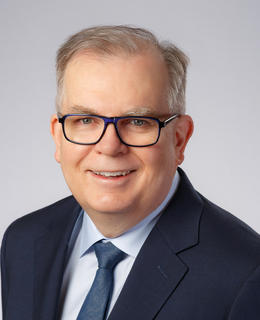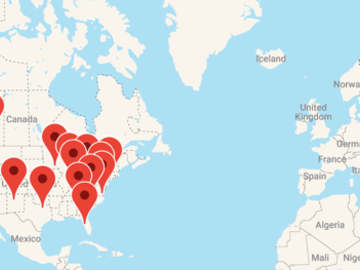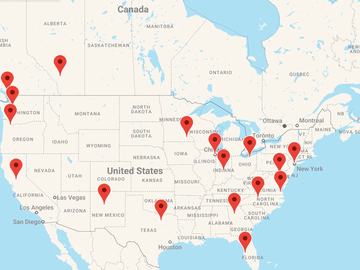
Dr. Mark Giles Hamilton
Positions
Professor
Cumming School of Medicine, Department of Clinical Neurosciences
Full Member
Hotchkiss Brain Institute
Full Member
Hotchkiss Brain Institute, Brain and Mental Health Research Clinics Initiative
Member
Arnie Charbonneau Cancer Institute
Contact information
Phone number
Office: 403.944.1626
Location
Office: Foothills Hospital
For media enquiries, contact
Kelly Johnston
Senior Communications Specialist
Please submit your media request here
Background
Educational Background
B.S. Zoology, University of Toronto, 1979
Doctor of Medicine Medicine, McGill University, 1983
FRCSC Neurosurgery, University of Calgary, 1991
Biography
Dr. Hamilton did his Bachelor of Science degree (with distinction) at the University of Toronto and then graduated from McGill University Medical School in 1983. He did his Neurosurgery Residency at the University of Calgary and received his FRCSC in 1991. He did Fellowship training in cerebrovascular, skull base, and pediatric Neurosurgery at the Barrow Neurological Institute in Phoenix, Arizona, and joined the University of Calgary Department of Clinical Neurosciences in 1994 where he is currently a Professor of Neurosurgery with additional appointments in the Department of Surgery and the Department of Pediatrics. He was the Chief of the Division of Pediatric Neurosurgery from 2002-2011. He is head of the University of Calgary Adult Hydrocephalus Program which he established, along with the University of Calgary Adult Hydrocephalus Clinic in 2008. Dr. Hamilton is the chair of the Adult Hydrocephalus Clinical Research Network (AHCRN) which has eight clinical sites in three countries, Past-President of the Hydrocephalus Society (International Society for Hydrocephalus and Cerebrospinal Fluid Disorders (ISHCSF)), a member of the Board of Directors of the Hydrocephalus Association (HA), Vice-Chair of the Medical Advisory Board (MAB) of HA, a member of the Board of Directors of Hydrocephalus Canada, and a member of the Editorial Boards of the Journal of Neurosurgery, The Canadian Journal of Neurological Sciences, and Fluids and Barriers of the CNS. His current main clinical and research interests are the diagnosis and management of hydrocephalus in adults.
Research
Areas of Research
- Brain Tumour patient treatment response (clinical trials)
- Deep vein thrombosis prophylaxis in brain tumor patients
- Adult hydrocephalus diagnosis, treatment and outcomes
Dr. Hamilton’s research interests focus on hydrocephalus, neuroendoscopy, neuro-oncology, and venous thromboembolism. Clinically, Dr. Hamilton specializes in paediatric neurosurgery, Neuro-oncology, hydrocephalus, neuroendoscopy, and Chiari Malformation.
Participation in university strategic initiatives
Projects
Cerebrospinal fluid (CSF) shunts are the most frequent type of surgical treatment for hydrocephalus which most commonly redirects some of the CSF from the brain into the abdominal cavity. External drains are sometimes required to monitor brain pressure or temporarily remove CSF. Patients undergoing a shunt or drain surgery have a significant risk for developing infection (6%-15%). Shunt and drain infections can have devastating effects on patients, risking the loss of neurological function or death. In addition, the treatment of these infections results in prolonged hospital stays and significantly increases healthcare costs. Previous pilot experience has demonstrated that infections can be significantly reduced with the adoption of protocols that establish how shunt surgery and drain insertion surgery are done to avoid this risk. The protocol for shunt infection prevention has been piloted for the Adult Hydrocephalus Program, in Calgary and resulted in a reduction in shunt infection from 6% to <1%. This project will introduce these protocols to all Alberta hospitals where adult neurosurgery is undertaken using interactive Quality Improvement methodology. We are engaging patients and families for input regarding study methods and will monitor infection rates to verify success. The reduction of infection rates will significantly benefit patients and their families and has the potential to reduce health care costs by approximately $10,000,000 over 3 years.
Thanks to a $14 million National Institute of Neurological Disorders and Stroke (NINDS) grant, the largest grant ever awarded to study adult hydrocephalus, the 8 sites of the Adult Hydrocephalus Clinical Research Network (AHCRN), working with 13 other health centers, hope to prove conclusively whether shunt surgery for iNPH is beneficial.
The NINDS-funded grant, called “A Placebo-Controlled Efficacy in iNPH Shunting (PENS) Trial” will be the first large-scale, multi-center, blinded, randomized controlled trial to evaluate the true response of shunting in patients with iNPH.
“This grant will allow the AHCRN to use its network of neurosurgeons, neurologists, and medical institutions to conduct a clinical trial that will finally give us the answers we’re looking for about whether shunting is an effective treatment for iNPH,” explained Dr. Mark Hamilton, Neurosurgeon, AHCRN Chair, and Vice-Chair of the Hydrocephalus Association Medical Advisory Board.
The AHCRN was founded for the purpose of increasing awareness and understanding of adult hydrocephalus, accelerating research, and improving treatments for adults with hydrocephalus (http://www.ahcrn.org/about-ahcrn/).
Four categories of adult hydrocephalus are defined: 1) transition—patients who were treated for hydrocephalus of any etiology before the age of 18 years; 2) unrecognized congenital—patients with imaging features, or enlarged head circumference, or both, determined to be consistent with congenital hydrocephalus but who were not recognized or treated before the age of 18 years; 3) acquired— patients with hydrocephalus secondary to known risk factors (e.g., subarachnoid hemorrhage, brain tumor), whether treated or untreated; and 4) suspected iNPH (SiNPH)— patients age ≥ 65 years referred for the evaluation of iNPH who had not previously received surgical treatment.
The registry includes entry criteria, demographics, hydrocephalus category and etiology, medical history, comorbidities, medications, symptoms, examination findings, previous and current surgical procedures (shunt or endoscopic third ventriculostomy), and imaging studies. Standard evaluations are administered to all subjects. To ensure consistency of the testing, all examiners are trained and required to demonstrate competency for the administration and interpretation of the evaluations.
Publications
Are you the profile owner?
Login to edit.


